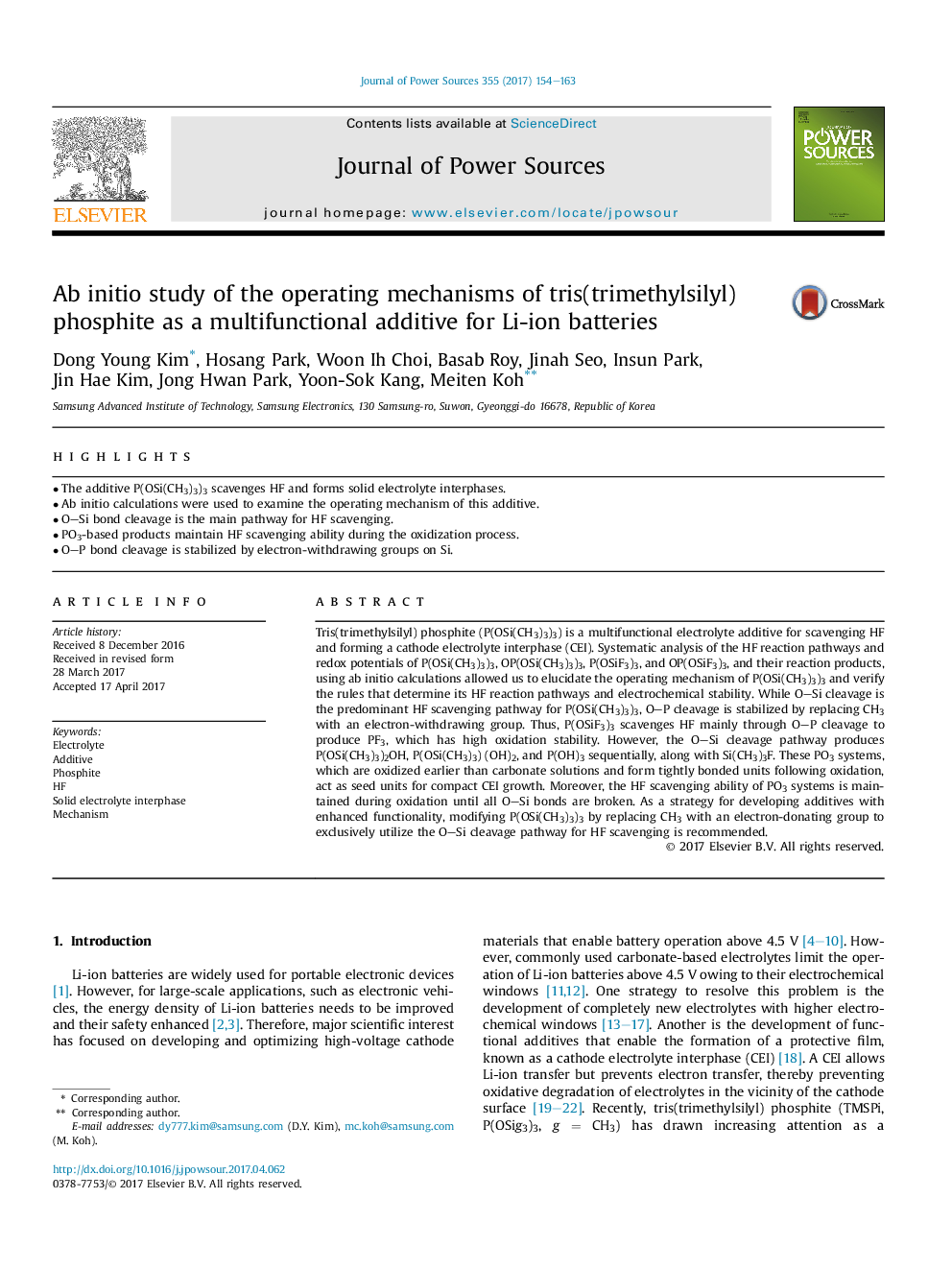| Article ID | Journal | Published Year | Pages | File Type |
|---|---|---|---|---|
| 5149118 | Journal of Power Sources | 2017 | 10 Pages |
Abstract
Tris(trimethylsilyl) phosphite (P(OSi(CH3)3)3) is a multifunctional electrolyte additive for scavenging HF and forming a cathode electrolyte interphase (CEI). Systematic analysis of the HF reaction pathways and redox potentials of P(OSi(CH3)3)3, OP(OSi(CH3)3)3, P(OSiF3)3, and OP(OSiF3)3, and their reaction products, using ab initio calculations allowed us to elucidate the operating mechanism of P(OSi(CH3)3)3 and verify the rules that determine its HF reaction pathways and electrochemical stability. While OSi cleavage is the predominant HF scavenging pathway for P(OSi(CH3)3)3, OP cleavage is stabilized by replacing CH3 with an electron-withdrawing group. Thus, P(OSiF3)3 scavenges HF mainly through OP cleavage to produce PF3, which has high oxidation stability. However, the OSi cleavage pathway produces P(OSi(CH3)3)2OH, P(OSi(CH3)3) (OH)2, and P(OH)3 sequentially, along with Si(CH3)3F. These PO3 systems, which are oxidized earlier than carbonate solutions and form tightly bonded units following oxidation, act as seed units for compact CEI growth. Moreover, the HF scavenging ability of PO3 systems is maintained during oxidation until all OSi bonds are broken. As a strategy for developing additives with enhanced functionality, modifying P(OSi(CH3)3)3 by replacing CH3 with an electron-donating group to exclusively utilize the OSi cleavage pathway for HF scavenging is recommended.
Related Topics
Physical Sciences and Engineering
Chemistry
Electrochemistry
Authors
Dong Young Kim, Hosang Park, Woon Ih Choi, Basab Roy, Jinah Seo, Insun Park, Jin Hae Kim, Jong Hwan Park, Yoon-Sok Kang, Meiten Koh,
